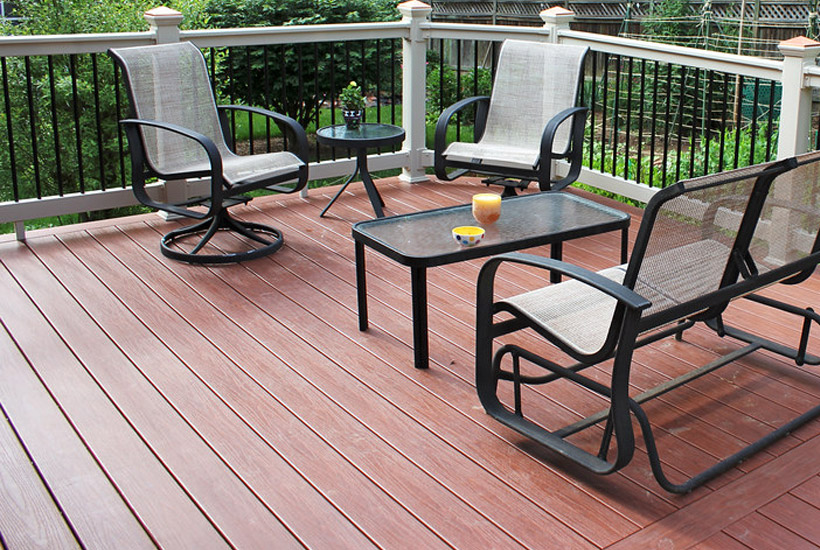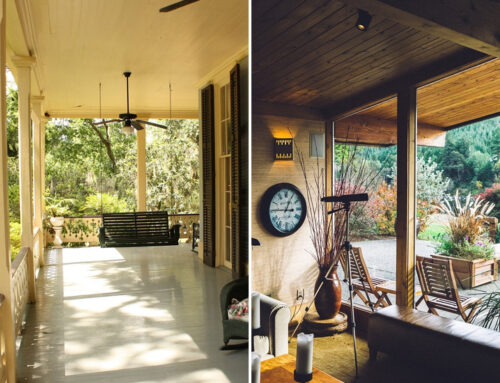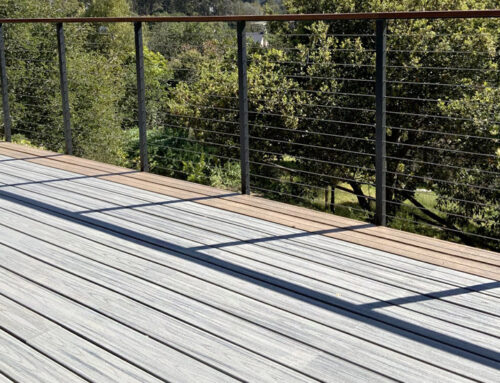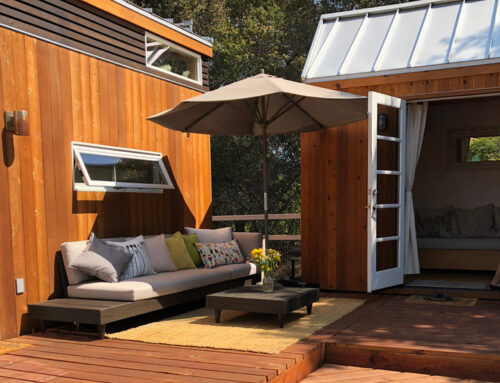While there are many hardwoods to consider, it’s hard to beat mahogany. Not only does this wood offer a deep, rich, and highly contrasting reddish brown color, but the grain is naturally beautiful and eye-catching.
In addition, mahogany is naturally rot resistant, meaning you will have decades of usable life from any exterior build project you have in mind. Mahogany will need regular upkeep such as sanding and staining or resealing, but these maintenance tasks every few years can give you up to 60 years of usable life on your deck.
While true mahogany can be hard to source and pricey to obtain, there are a variety of mahogany alternatives to consider if you want the same unique look without the high price, though the natural rot resistance may be lost.
Pros of Mahogany for Decking
Durability
Mahogany, while somewhat pricey and difficult to source, is an extremely durable wood. It’s perfect for a wide range of both indoor and outdoor projects including decking, flooring, cabinetry, and doors.
An outdoor deck made from pure mahogany wood can last up to 40 years when maintained properly, making it significantly more durable than cedar, pine, or redwood. That makes it a worthwhile investment to consider if you’re thinking about building a new deck.
Rot Resistance
Mahogany is one of the few woods available for decking that is naturally rot resistant. This means you won’t need to focus on using only pressure treated wood, or those that have been soaked in a decay resisting oil or tar. Instead, you can enjoy the pure and natural look of mahogany on your next deck or interior flooring project.
Striking Color and Pattern
One of the most notable things about mahogany is its rich dark color. This wood gives off a deep reddish brown color that is unique to this type of wood, making it extremely desirable for indoor and outdoor woodworking elements.
In addition, mahogany offers a unique and striking grain pattern depending on the age and size of the tree when harvested. This grain is so tightly interwoven than it helps improve the strength of the wood itself when turned into workable lumber.
Cons of Mahogany for Decking
Overall Price
While most hardwoods can be expensive, mahogany is normally the most expensive. This is due in part to true mahogany being somewhat hard to source, while similar-looking mahogany alternatives can be found easier.
True mahogany can cost around $30 per foot of board making a large mahogany deck a sizable investment for most homeowners to consider.
Installation Difficulty
Like some other hardwoods, mahogany can be difficult to install due to its unique grain. The tightly interlocking grain requires woodworkers and deck builders to use a variety of different tools and specialized blades to cut the wood properly.
Upkeep Requirements
Mahogany will need resealing every two years for the best long term results. If resealing is not needed, staining the wood every 2-3 years can help prevent damage from insects and the sun’s rays.
Should I Build the Entire Deck out of Mahogany?
Most mahogany decks still use pressure treated timber for framing and joists, while the mahogany just provides the decking. It’s the best way to control costs for a new deck, while also maximizing the lifespan and stability. After applying stain and other finishes, you’ll be left with a gorgeous, rock-solid deck to enjoy for decades to come.






